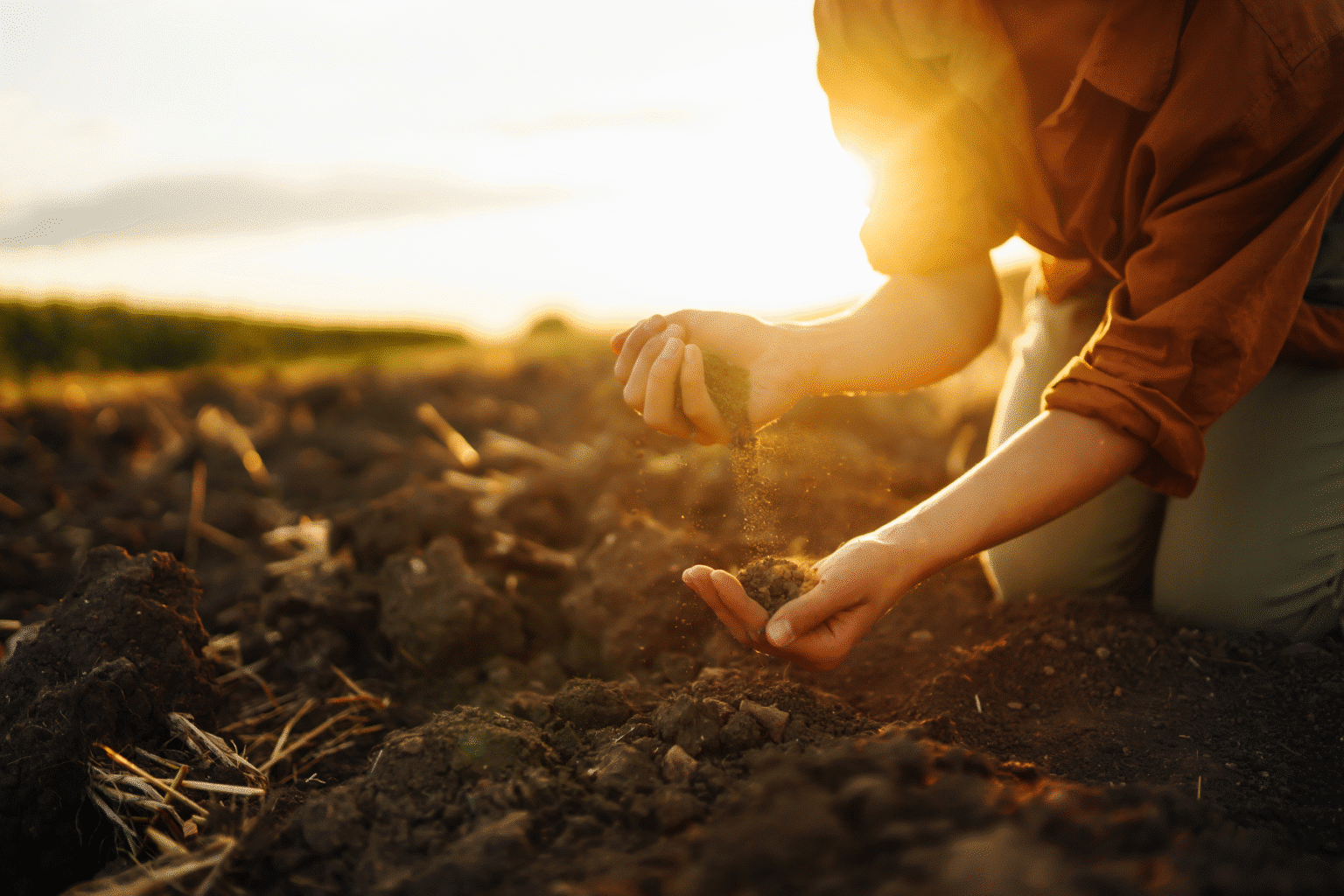You’ve watered your plants, checked for pests, added mulch, and picked the right spot to plant them. Still, your plants are struggling.
You are not alone. Many gardeners face this frustration, even after following all the care guidelines.
While water problems, pests, and diseases are common culprits for struggling plants, there are other factors to consider. Here are four often-overlooked reasons why your newly planted trees and shrubs may not be doing well, along with what you can do to help them thrive.
Compacted Soil and Construction Damage Can Lead to Struggling Plants
Why It Matters
Soil contains small air pockets that are necessary for your plant’s growth. These pockets allow oxygen to reach the roots and enable water and nutrients to move through the soil effectively. However, when soil becomes compacted, these air pockets disappear, and roots can’t breathe, grow, or absorb the water and nutrients they need. This often leads to plant problems like poor root development and stunted growth.
What to Look For
- Drought symptoms, despite regular watering
- Standing water after rain due to poor water infiltration
- Soil that is hard to dig
- Lower yields of fruit or flowers
- Discolored or wilted leaves
- Slow or no new growth
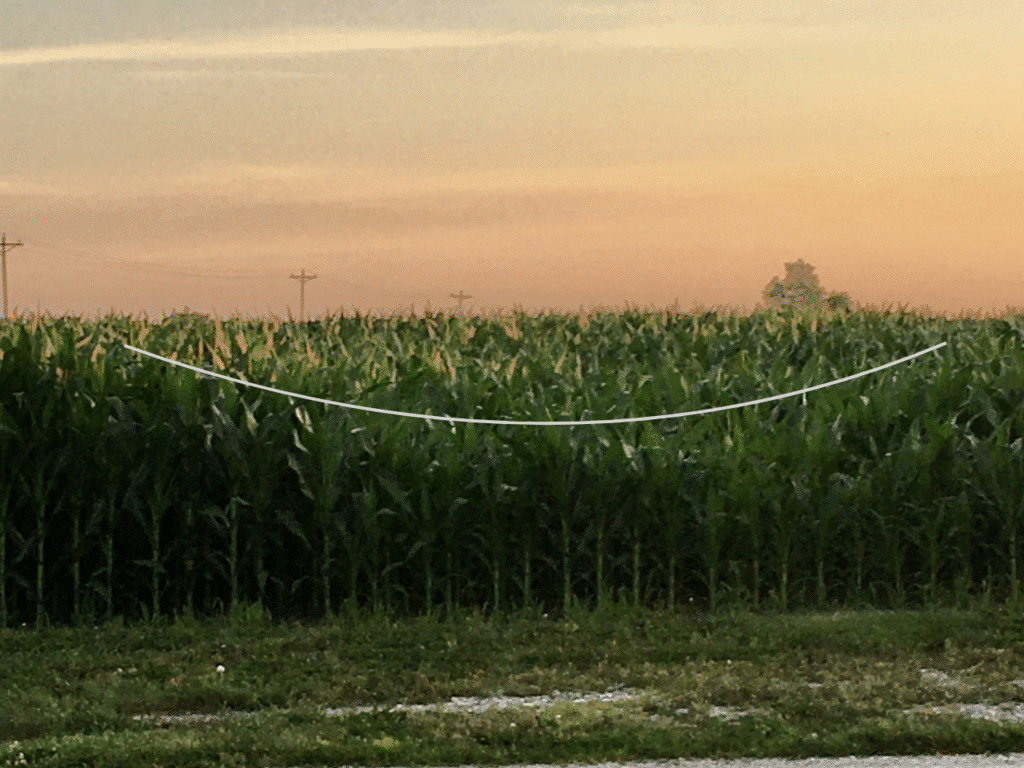
Why It Happens
Compaction often occurs from repeated traffic caused by heavy equipment, foot traffic, or mowing. The path your puppy consistently takes around your backyard? Compacted. This is a common issue in suburban neighborhoods, especially in yards with newly built homes.
What You Can Do
Start by amending the entire planting area with organic matter. This will improve drainage and provide structure for roots to grow through. Avoid walking on or working with wet soil, as this can lead to increased compaction. Additionally, steer clear of adding sand to the soil, as mixing sand with clay can produce a concrete-like substance that worsens compaction.
If poor drainage continues, consider choosing plants that thrive in wet conditions, or look into more intensive solutions like tilling or aeration.
➡️ Optional Resource: Plant List: Plants for Wet Soil (PDF)
Improper Planting Depth & Hidden Root Flares
Why It Matters
Burying a tree’s root flare too deeply is a critical tree planting mistake to avoid. When the root flare is covered, root development can slow or even stop, and this can hinder the roots’ ability to take in oxygen. Additionally, covering the root flare can lead to bark decay.
What to Look For
- Visibility of the root flare is essential; planting too low or too high can be harmful to the plant.
- Stunted growth
- Increased pests and diseases
- Girdling roots
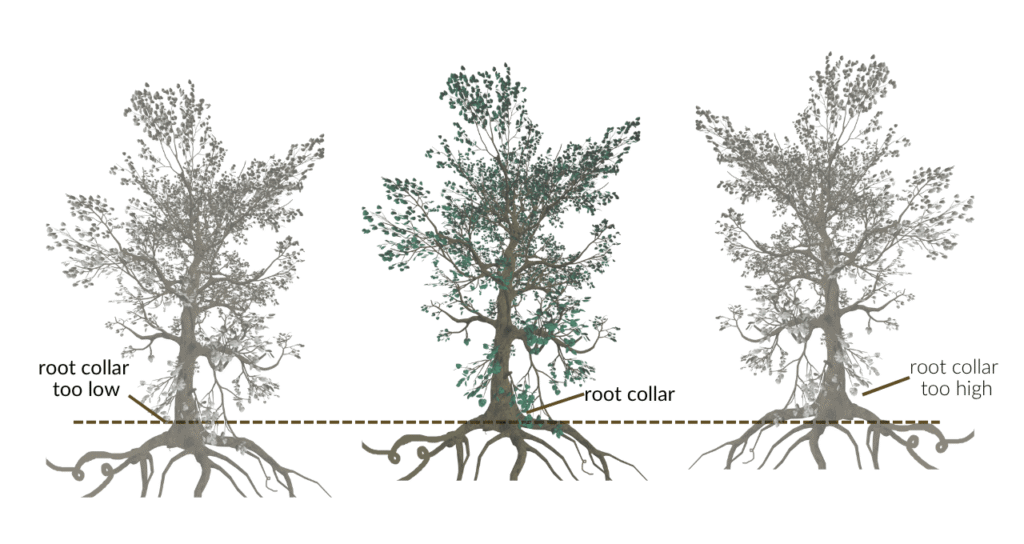
Why It Happens
Plants can settle and sink for various reasons, including loosened soil or burrowing animals, which can cause the root flare to be buried too deep. Over-mulching can also cover the root flare, and sometimes the plant may simply be planted too deeply from the start.
What You Can Do
If you can’t see the root collar (the area around the root flare), it likely means the tree is planted too low. For newly planted trees and shrubs, you can usually raise and reposition them to the correct height. If the root flare is too exposed, you’ll need to remove the plant and dig a deeper hole. If there’s too much mulch around the base, you can carefully pull some of it away to expose the root collar.
➡️ Extra Help: Planting Guide: Trees & Shrubs (PDF)
Sunscald and Frost Cracks: Midwest Winter Damage
Why It Matters
In early spring, struggling plants often suffer from winter trunk damage, particularly young trees and those with thin bark.
What to Look For
- Vertical cracks in the trunk
- Sunken or split bark
- Damage is mostly on the southwest-facing side of the trunk
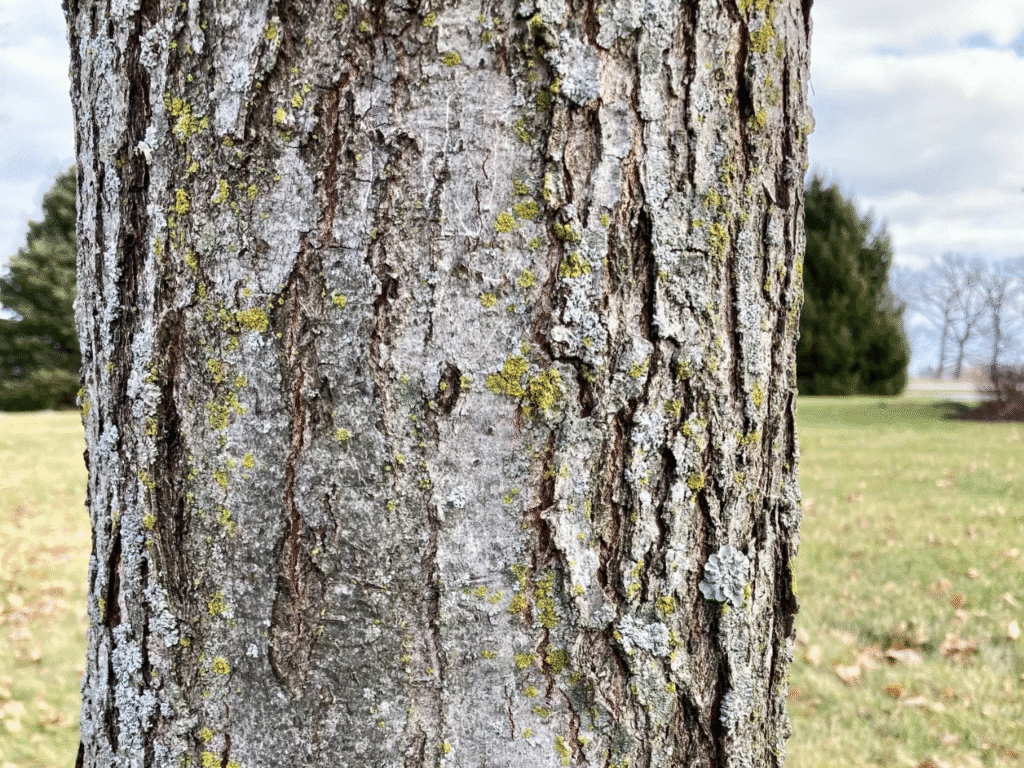
Why It Happens
In winter, exposure to sunlight in the afternoon warms one side of the tree trunk, usually the southwest side. This warmth causes the plant tissues to thaw. However, when temperatures drop quickly overnight, these tissues can refreeze and develop cracks. Over time, these cracks may result in scarring, decay, or structural weaknesses in the tree.
What You Can Do
In the fall, wrap the trunks of young or thin-barked trees with breathable tree wrap, then remove it in the spring. This practice helps prevent temperature fluctuations that can cause cracking.
➡️ Learn More: How to Protect Trees from Winter Sunscald
Girdling and Vascular Damage Prevent Nutrient Flow
Why It Matters
The vascular cambium plays a crucial role in a plant’s growth. Its primary function is to produce new xylem and phloem, which are essential for transporting water and nutrients throughout the plant. Any damage to the vascular cambium can stop the flow of these vital resources, preventing the plant from thriving.
What to Look For
- Wilted or thinning canopy
- Dead branches
- Bark damage or signs of chewing
- Visible roots wrapped around the trunk
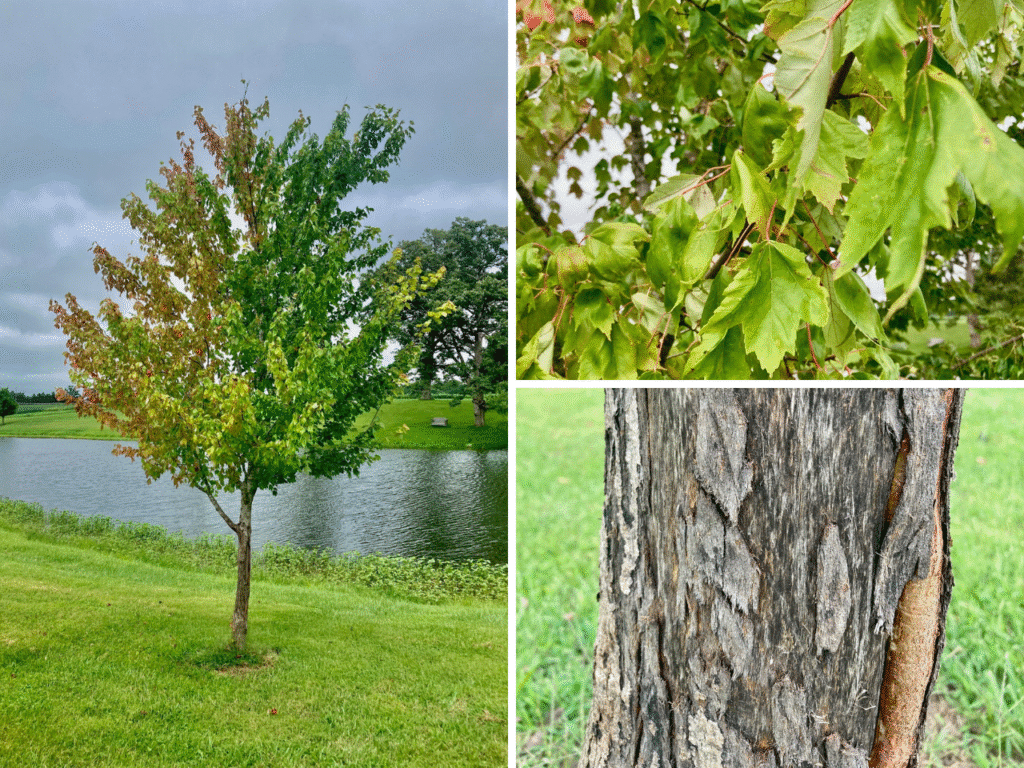
Why It Happens
Girdling roots can wrap around a tree trunk, damaging the cambium layer beneath the bark, which is crucial for nutrient transport. Insect damage, particularly from chewing pests, can also damage this layer. String trimmers repeatedly striking the base of a tree can cause significant damage. Also, tree protection wraps or staking can harm the tree if applied too tightly or left on for too long.
What You Can Do
Regularly inspect trees for signs of damage, especially at the base. Remove any wraps and guards in the spring, and ensure mulch is kept back several inches from the trunk. If you notice girdling roots, consider having a professional prune them to restore proper circulation.
Help for Struggling Plants Starts with Understanding
Struggling plants can be frustrating, especially when facing challenges like clay soil, new construction, and unpredictable weather. Don’t lose hope, though! With knowledge and timely action, you can make a significant difference. Embrace gardening’s natural cycles and challenges. By staying proactive and understanding your plants’ specific needs, you’ll transform those struggles into a thriving landscape that you’ll enjoy for years to come!
Need help diagnosing plant problems? Visit our garden center or schedule a consultation with one of our experts. We’ll help you get your landscape growing again.



